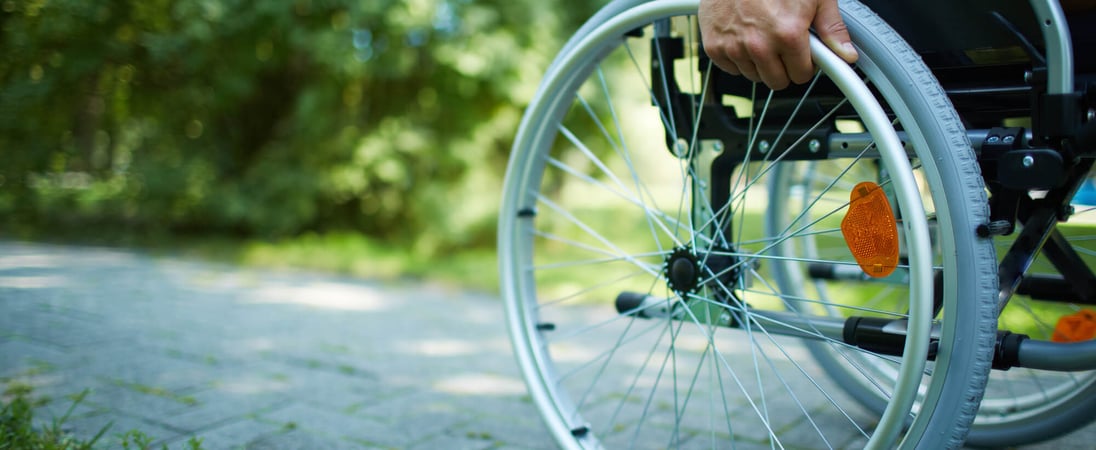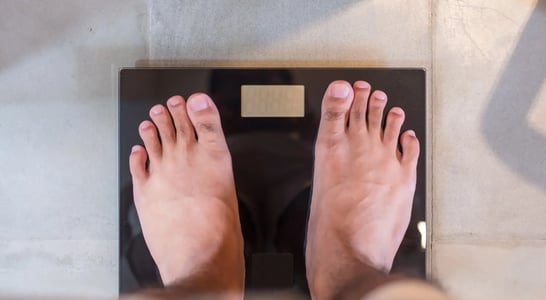
International Disability Day
Champion an inclusive society for people living with mental and physical disabilities by attending an event, fundraising or helping someone in need.
International Disability Day, or the International Day of People with Disability, has been promoted by the United Nations since 1992. The aim of International Disability Day is to encourage a better understanding of people affected by disabilities and to help make people more aware of their rights, dignity, and welfare.
As well as raise awareness about the benefits of integrating disabled persons into every aspect of life, from economic to political to social and cultural.
International Disability Day is not concerned exclusively with either mental or physical disabilities, but rather encompasses all known disabilities, from Autism to Down Syndrome to Multiple Sclerosis.
Celebrating this day also highlights the need for equal opportunities in education, employment, and healthcare.
It reminds us that we all benefit when society includes and supports everyone. The aim is to ensure that everyone, regardless of ability, can lead fulfilling lives and contribute to their communities.
How to Celebrate International Disability Day
Since 1992, various events have been held in many countries. International Disability Day is used for discussions, forums, and campaigns related to disability, and communities are encouraged to organize meetings, talks, and even performances in their local areas.
These can range from hosting a musical to a play, with disabled people being involved in these productions.
The overall aim is to show non-disabled people that a person with a disability can be a vibrant member of society, as it happens that the entirely healthy are not always quite aware of this fact, which can lead to different kinds of discrimination of varying degrees of severity.
Host an Inclusive Art Exhibit
Why not celebrate with some colorful creativity? Host an art exhibit featuring works by artists with disabilities.
Display paintings, sculptures, and digital art. Invite the community to appreciate these unique perspectives. This is a great way to showcase talent and promote inclusivity in the art world.
Organize a Fun Run
A fun run or walk is a fantastic way to bring people together. Plan an event where everyone, regardless of ability, can participate. Include adaptive options like wheelchair races.
This promotes fitness and shows solidarity. Plus, everyone loves a good excuse to get moving and enjoy the outdoors!
Screen Inspiring Films
Turn your living room into a cozy cinema. Screen movies that highlight the experiences and achievements of people with disabilities.
Invite friends and family for a night of snacks and stories. Discussions afterward can spark ideas on how to support inclusivity in everyday life.
Host an Awareness Workshop
Why not organize an engaging workshop? Invite speakers with disabilities to share their stories and experiences.
Provide practical tips on making spaces more accessible. Attendees can learn about assistive technologies and how to advocate for disability rights. This is a great way to educate and inspire change.
Create Inclusive Crafts
Gather friends and family for a craft session. Make inclusive items like braille cards, sensory toys, or adaptive clothing.
Donate these crafts to local organizations supporting people with disabilities. This fun activity combines creativity with a meaningful purpose. Plus, it’s a wonderful way to spend quality time together.
Plan a Community Picnic
A community picnic can be a joyful celebration. Choose an accessible park and invite everyone for a day of food, games, and fun.
Ensure the venue has facilities for people with disabilities. Bring along inclusive games and activities. It’s a perfect way to enjoy the day and build stronger community bonds.
Volunteer for Local Organizations
Spend the day giving back by volunteering with local disability organizations. Help with events, offer skills, or simply provide support.
Your time and effort can make a big difference. Plus, volunteering is a rewarding way to connect with others and learn more about their challenges.
Launch a Social Media Campaign
Use social media to spread awareness. Create posts, videos, and infographics highlighting the importance of inclusivity.
Share stories of people with disabilities and their achievements. Encourage others to join the conversation. This can help reach a broader audience and inspire positive change.
Learn About International Disability Day
International Disability Day has been created so that we can all think about how we can create a society that is inclusive and caters to everyone’s needs. Did you know that 15 percent of the population across the world has some form of disability?
This accounts for around one billion people! That’s a very high figure. While we have taken some great strides forward in terms of accessibility and ensuring that disabled people can live as great a life as possible, there are still steps that need to be taken.
On this day, we are encouraged to think about how we can create a community that is inclusive for everyone.
This day also gives us the perfect opportunity to further our knowledge and awareness about disabilities. There are many different types of disabilities, which can fall into 21 categories.
This includes mental illness, intellectual disabilities, hearing impairments, blindness, and more. It is helpful to learn about these conditions so that we know how we can assist anyone who is living with a disability.
When we talk about creating a society that is inclusive, we don’t only mean ensuring that disabled people are able to travel with ease and can go to any place they wish, but we also mean accessibility in terms of being able to have access to different jobs. There are lots of ways that we can all help and play a role in this.
History of International Disability Day
Everything started in 1976, when the United Nations General Assembly made the decision that 1981 should be the International Year of Disabled Persons.
The 5 years between the making of that decision and the actual Year of Disabled Persons were spent contemplating the hardships of the disabled, how the opportunities of the disabled could be equalized, and how to ensure the disabled take part fully in community life enjoying all of the rights and benefits non-disabled citizens have.
Another issue that was touched on was how world governments could go about preventing disabilities from touching people in the first place, so much of the talk was about the viruses and other illnesses that lead to various kinds of disability.
The decade between 1983 and 1992 was later proclaimed the United Nations Decade of Disabled Persons, and during that time, all of the concepts previously created became part of one long process that was implemented to improve the lives of disabled people worldwide.
International Disability Day FAQs
What is the significance of the Disability Flag, and how did it originate?
The Disability Flag, also known as the Flag of the Rights of Persons with Disabilities, features three horizontal stripes in gold, silver, and bronze.
Created by Valencian dancer Eros Recio in 2017, it symbolizes the overcoming of obstacles and celebrates the achievements of persons with disabilities.
The colors represent the medals of the Paralympic Games, highlighting the triumphs of the disability community.
How did the Purple Parade in Singapore become a prominent event for disability awareness?
The Purple Parade began in 2013 as a social movement in Singapore to promote equal rights for people with disabilities.
It features a carnival-like atmosphere with performances and booths from various disability organizations.
Over the years, it has grown significantly, attracting thousands of participants and becoming a key event in the country’s disability advocacy efforts.
What is the ‘WeThe15’ campaign, and what does it aim to achieve?
Launched in 2021, ‘WeThe15’ is a global human rights movement representing the 15% of the world’s population with disabilities.
It aims to end discrimination and advocate for the inclusion of persons with disabilities in all aspects of society.
The campaign was introduced during the Tokyo 2020 Paralympic Games, with landmarks worldwide illuminated in purple to mark its launch.
How do different countries uniquely celebrate the International Day of Persons with Disabilities?c
Celebrations vary globally. In Australia, events include art exhibitions and community festivals. In India, awareness campaigns and educational programs are organized.
In the United States, activities range from policy discussions to cultural performances, all aimed at promoting inclusivity and raising awareness.
What are some common myths about disabilities that this day helps to dispel?
A prevalent myth is that all disabilities are visible. In reality, many disabilities are invisible, such as mental health conditions and chronic illnesses.
Another misconception is that persons with disabilities are dependent; however, with appropriate support, they lead independent and fulfilling lives.
How has the observance of this day evolved since its inception in 1992?
Initially focused on raising awareness, the day has evolved to include advocacy for policy changes, promoting accessibility, and celebrating the achievements of persons with disabilities.
It now serves as a platform for launching global initiatives and campaigns aimed at fostering inclusivity.
What role does the United Nations play in promoting this day?
The United Nations established the International Day of Persons with Disabilities in 1992.
It promotes the rights and well-being of persons with disabilities in all spheres of society. The UN organizes events, publishes reports, and collaborates with member states to advance disability inclusion.
Are there any notable symbols associated with this day?
Beyond the Disability Flag, the color purple is widely used to symbolize disability awareness.
Landmarks and buildings are often illuminated in purple on this day to show support and raise awareness about disability inclusion.
What are some historical milestones in the fight for disability rights that connect to this day?
The disability rights movement has achieved several key milestones. The 1970s saw the creation of the Independent Living Movement in the U.S., advocating for self-determination.
The Americans with Disabilities Act (ADA) of 1990 became a landmark law ensuring equal opportunities for persons with disabilities.
Globally, the adoption of the UN Convention on the Rights of Persons with Disabilities in 2006 marked a major step in international disability rights.
These milestones provide context for the continued advocacy celebrated on the International Day of Persons with Disabilities.
What impact has the International Day of Persons with Disabilities had on global policies?
The observance has led to increased awareness and the implementation of policies promoting accessibility and inclusion.
It has influenced international agreements, such as the Convention on the Rights of Persons with Disabilities, and inspired national legislation aimed at protecting the rights of persons with disabilities.
See what else is happening…
There’s always more going on every month at Days Of The Year. Here are our favorites this month!
Also on ...
View all holidaysLet’s Hug Day
Hugging can lower stress, boost happiness, and strengthen bonds. It’s a great way to show love and appreciation, and it feels amazing!
We think you may also like...
Manuary
A time for men to embrace their inner lumberjack, grow a beard, and take on new challenges. Let's celebrate men being their best selves!
World Obesity Day
Maintaining a healthy weight can be a challenge, but a balanced diet and regular exercise can improve physical health and mental wellbeing.








